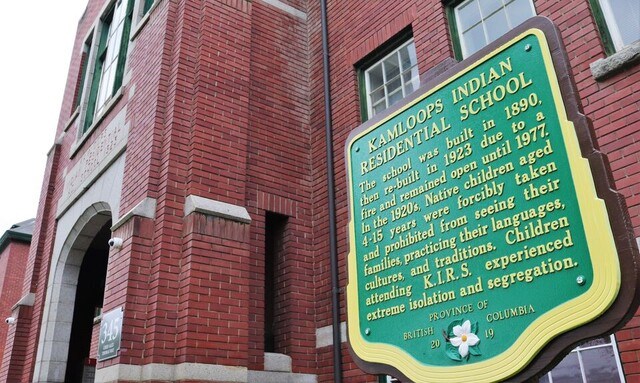It was fitting that this week of mostly sunshine started with clouds hanging overhead on Monday, casting shadows on the flags flying at half-mast and the orange ribbons flapping in the wind down below.
The dreary start to the week mirrored our collective grief for the at least 215 children found buried in unmarked graves at the Kamloops Indian Residential School.
The discovery, announced by Chief Rosanne Casimir of the Tk’emlups te Secwépemc First Nation last week, is so horrific it is hard to put words to.
“Those poor babies,” said Elder George Jacobs at a Squamish Nation ceremony held Monday. He attended the Kamloops school for a few years as well as St. Paul’s Indian Residential School.
Many Squamish Nation Elders were taken to the school.
Imagine you are away from home and classmates and bunkmates go missing one by one, never to be seen again.
Or worse, you know your friend at school with you has died and is not going home — and is buried out in the surrounding yard somewhere.
Now imagine what that trauma, stacked on top of other traumas you endured, does to how you feel and live the rest of your life.
This is the reality for those who went to residential school with the young victims of, at best, preventable disease, at worse violence or neglect.
The devastation for those children who died is beyond heart-wrenching, as is the knowledge of their deaths for survivors.
Not that it was news to many.
“It’s always been known when we were kids,” Willow George told Castanet Kamloops.
“We knew when we were kids — we knew they were buried, they were put in the river, in the pond, in the furnace. But the number was never known.”
George’s parents and brothers went to the school, which was in operation from 1890 to 1978.
It was run by the Catholic church and the federal government.
To our Indigenous readers, we see you, we hear you, and we stand with you.
We join you as allies in supporting the work that needs to be done to heal our society from this tragic and shameful chapter of our past.
The Squamish Nation, among others, including MP Jagmeet Singh, has called on the federal government to do more to implement the 94 calls to action in the Truth and Reconciliation Commission, which were released six years ago after years of hearing from residential school survivors.
In particular, the Nation wants all cemeteries and sites searched for other graves.
“Sadly, this is not an exception or an isolated incident. We have to acknowledge the truth: residential schools were a reality, a tragedy that existed here in our country and we have to own up to it,” Prime Minister Justin Trudeau told The Canadian Press this week.
These words, the ribbons around town, the flags at half-mast and the gestures on social media are all appropriate and powerful.
But let’s finally move past these symbolic gestures and really tackle those 94 recommendations with gusto and conviction, as if those 215 lives depended on it.



